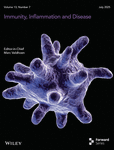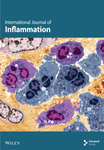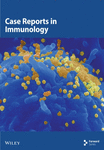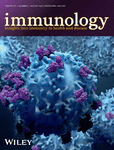Journal list menu
Export Citations
Download PDFs
Research Article
Open Access
oa
SEMA5A-PLXNB3 Axis Promotes PDAC Liver Metastasis Outgrowth through Enhancing the Warburg Effect
- First Published: 27 January 2023
Research Article
Open Access
oa
Identification of Cytosolic DNA Sensor cGAS-STING as Immune-Related Risk Factor in Renal Carcinoma following Pan-Cancer Analysis
- First Published: 09 August 2022
Research Article
Open Access
oa
A Hypoxia-Related lncRNA Signature Correlates with Survival and Tumor Microenvironment in Colorectal Cancer
- First Published: 08 July 2022
Research Article
Open Access
oa
HMGA1 Promotes Macrophage Recruitment via Activation of NF-κB-CCL2 Signaling in Hepatocellular Carcinoma
- First Published: 22 June 2022
Review Article
Open Access
oa
Tumor-Associated Inflammation: The Tumor-Promoting Immunity in the Early Stages of Tumorigenesis
- First Published: 13 June 2022
Review Article
Open Access
oa
Tumor Microenvironment: Lactic Acid Promotes Tumor Development
- First Published: 12 June 2022
Research Article
Open Access
oa
miR-196a-5p-Rich Extracellular Vesicles from Trophoblasts Induce M1 Polarization of Macrophages in Recurrent Miscarriage
- First Published: 23 May 2022
Review Article
Open Access
oa
Efficacy of PD-1/PD-L1 Inhibitors versus Chemotherapy in Lung Cancer with Brain Metastases: A Systematic Review and Meta-Analysis
- First Published: 20 May 2022
Research Article
Open Access
oa
PLAC8 Overexpression Promotes Lung Cancer Cell Growth via Wnt/β-Catenin Signaling
- First Published: 22 April 2022
Research Article
Open Access
oa
Diet-Induced Obesity Promotes Liver Metastasis of Pancreatic Ductal Adenocarcinoma via CX3CL1/CX3CR1 Axis
- First Published: 18 April 2022
Research Article
Open Access
oa
Exosomal miR-543 Inhibits the Proliferation of Ovarian Cancer by Targeting IGF2
- First Published: 29 March 2022
Research Article
Open Access
oa
Dysbiosis of Gastric Mucosal Fungal Microbiota in the Gastric Cancer Microenvironment
- First Published: 16 March 2022
Review Article
Open Access
oa
The Nervous System Contributes to the Tumorigenesis and Progression of Human Digestive Tract Cancer
- First Published: 07 March 2022
Research Article
Open Access
oa
Endothelial Cells Potentially Participate in the Metastasis of Triple-Negative Breast Cancer
- First Published: 27 February 2022
Research Article
Open Access
oa
Systematic Pan-Cancer Analysis of KLRB1 with Prognostic Value and Immunological Activity across Human Tumors
- First Published: 03 January 2022
Research Article
Open Access
oa
Transcriptome Analysis of Large to Giant Congenital Melanocytic Nevus Reveals Cell Cycle Arrest and Immune Evasion: Identifying Potential Targets for Treatment
- First Published: 06 December 2021









